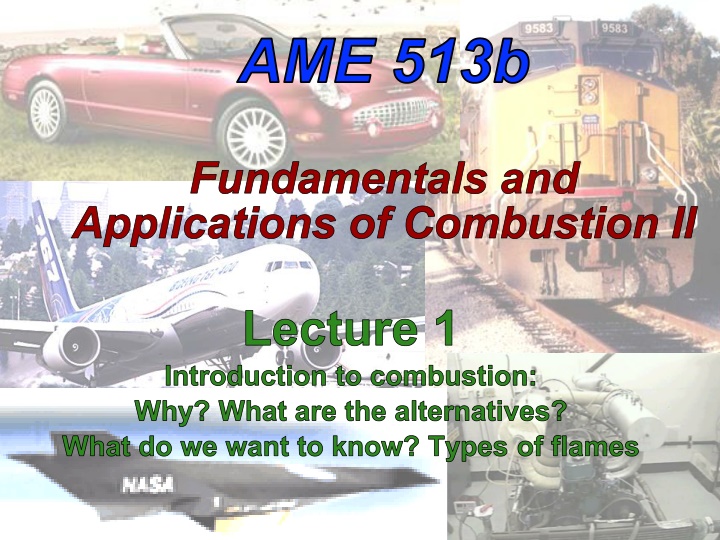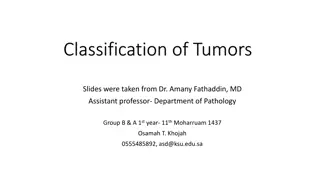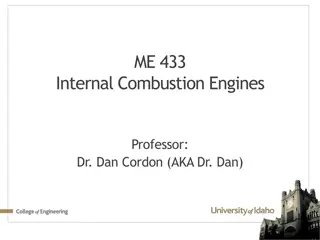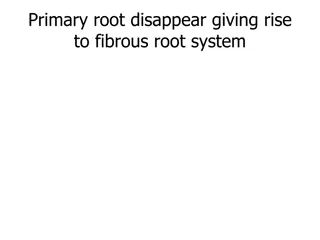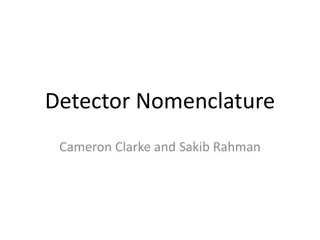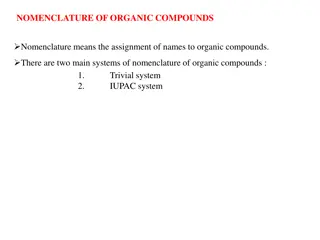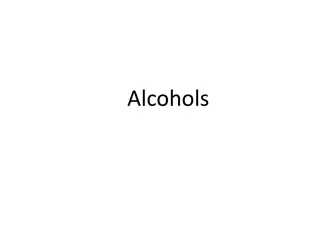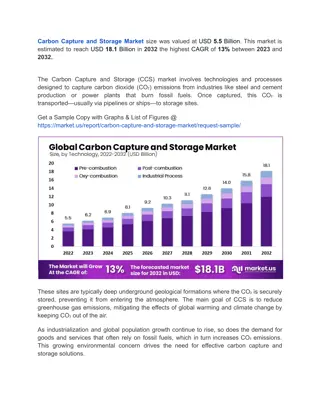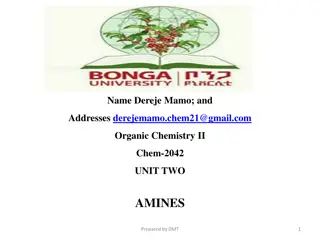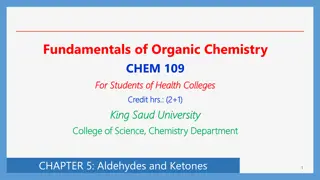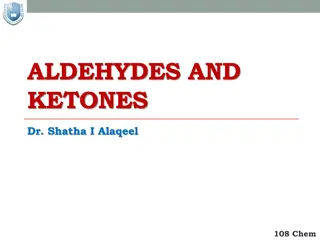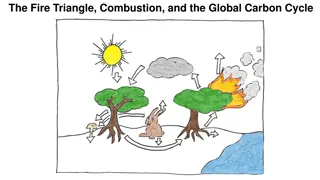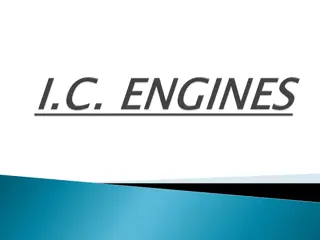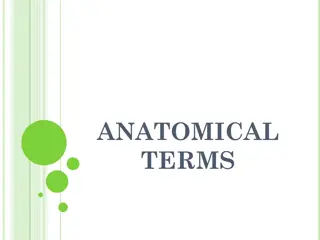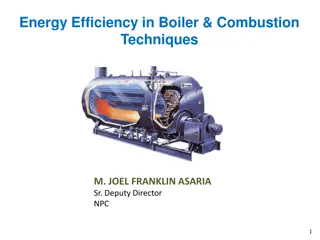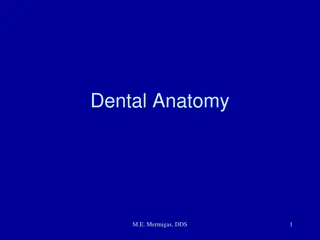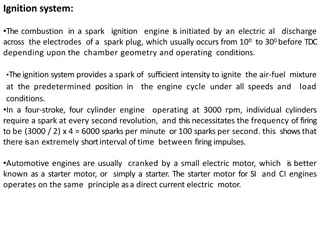Fundamentals of Combustion II - Introduction and Nomenclature
This lecture introduces the fundamentals of combustion by discussing reasons for studying combustion, alternative energy sources, and what we aim to understand. It covers different types of flames and provides a comprehensive nomenclature summary for the course, including various parameters and their units. The content delves into topics such as reaction rates, energy, mass flow rates, and thermal properties essential for understanding combustion processes.
Download Presentation

Please find below an Image/Link to download the presentation.
The content on the website is provided AS IS for your information and personal use only. It may not be sold, licensed, or shared on other websites without obtaining consent from the author.If you encounter any issues during the download, it is possible that the publisher has removed the file from their server.
You are allowed to download the files provided on this website for personal or commercial use, subject to the condition that they are used lawfully. All files are the property of their respective owners.
The content on the website is provided AS IS for your information and personal use only. It may not be sold, licensed, or shared on other websites without obtaining consent from the author.
E N D
Presentation Transcript
AME 513b Fundamentals and Applications of Combustion II Lecture 1 Introduction to combustion: Why? What are the alternatives? What do we want to know? Types of flames
Nomenclature (summary for whole course) Meaning (units) . Cross-section area (m2) Throat area (m2) Exit area (m2) Pre-exponential factor in reaction rate expression (AME 513a) = Z in 513b ([moles/m3]1-nK-a/s) (n = order of reaction) Transfer number for droplet burning (---) Sound speed (m/s) Duct circumference (m) Drag coefficient (---) Friction coefficient (---) Carbon monoxide (compound having 1 carbon and 1 oxygen atom) Heat capacity at constant pressure (J/kgK) Heat capacity at constant volume (J/kgK) Mass diffusivity (m2/s) Drag force (N) Degree Of Reaction Freedom Energy contained by a substance = U + KE + PE (J) Activation Energy (J/mole) Symbol A A* Ae B B c C CD Cf CO CP Cv D D DORF E Ea 2 AME 513b - Spring 2020 - Lecture 1 - Introduction
Nomenclature (summary for whole course) Meaning (units) . Fuel mass fraction in mixture (---) Fuel to air mass ratio (---) Acceleration of gravity (m/s2) Gibbs function h - Ts (J/kg) Enthalpy U + PV (J) Enthalpy per unit mass = u + Pv (J/kg) Heat transfer coefficient (usually W/m2K, dimensionless in AirCycles.xls files) Enthalpy of chemical species i per mole = (J/mole) Thermal enthalpy of chemical species i per mole (J/mole) Specific impulse (sec) Equlibrium constant of chemical species i (---) Thermal conductivity (W/mK) Reaction rate constant ([moles/m3]1-n/sec) (n = order of reaction) Droplet burning rate constant (m2/s) Stretch rate (1/s) (in 513a notation; = in 513b) Karlovitz number (= 0.157 ReL-1/2 (u /SL)2 for premixed flames in turbulent flows) Kinetic energy (J or J/kg) Lift force (N) Jet flame length (m) Integral length scale of turbulence (m) Law Of Mass Action Symbol f FAR g g H h h ISP Ki k k K K Ka KE L Lf LI LOMA h i 3 AME 513b - Spring 2020 - Lecture 1 - Introduction
Nomenclature (summary for whole course) Meaning (units) . Molecular weight of chemical species i (kg/mole) Mach number (---) mass (kg) Mass flow rate (kg/sec) Air mass flow rate (kg/s) Fuel mass flow rate (kg/s) Order of reaction (---) Exponent on T term in expression for reaction rate constant k Number of moles of chemical species I Number of chemical species in a mixture Nitric oxide (compound having 1 nitrogen atom and 1 oxygen atom) Oxides of Nitrogen (any compound having nitrogen and oxygen atoms) Ozone Pressure (N/m2) Ambient pressure (N/m2) Exit pressure (N/m2) Reference pressure (101325 N/m2) Stagnation pressure (N/m2) Potential Energy (J or J/kg) Heat transfer (J or J/kg) Heat transfer rate (Watts or Watts/kg) Fuel heating value (J/kg) Symbol Mi M m n n ni N NO NOx O3 P Pa Pe Pref Pt PE Q QR m m a m f 2 2 W + m (hin-hout)+vin 2-vout 0= Q - +(gzin-gzout) 2 4 AME 513b - Spring 2020 - Lecture 1 - Introduction
Nomenclature (summary for whole course) Meaning (units) . Gas constant = /M (J/kgK) Flight vehicle range (m) Compression ratio (Vc+Vd)/Vc (---) Expansion ratio (---) Reynolds number of turbulence u LI/ (---) Universal gas constant = 8.314 J/moleK Entropy (J/K) Entropy per unit mass (J/kgK) Laminar burning velocity (m/s) Turbulent burning velocity (m/s) Specific Thrust Temperature (K) Thrust Specific Fuel Consumption Adiabatic Flame Temperature (K) Stagnation temperature (K) Wall temperature Ambient Temperature (K) Symbol R R r or rc re ReL S s SL ST ST T TSFC Tad Tt Tw T 5 AME 513b - Spring 2020 - Lecture 1 - Introduction
Nomenclature (summary for whole course) Meaning (units) . Internal energy (J) Internal energy per unit mass (J/kg) Velocity (m/s) (most easily confused nomenclature internal energy vs. velocity) Exit velocity (m/s) Flight velocity (m/s) Turbulence intensity (m/s) Unburned hydrocarbons Volume (m3) Specific volume = 1/ (m3/kg) Work transfer (J or J/kg) Work transfer rate (Watts or Watts/kg) Mole fraction fuel in mixture (---) Mole fraction of chemical species i (---) Mass fraction of fuel in mixture (---) Pre-exponential factor in reaction rate expression (AME 513b) = B in 513a ([moles/m3]1-nK-a/s) (n = order of reaction) Elevation (m) Symbol U u u ue u1 u UHC V v W Xf Xi Yf Z z 2 2 W + m (hin-hout)+vin 2-vout 0= Q - +(gzin-gzout) 2 6 AME 513b - Spring 2020 - Lecture 1 - Introduction
Nomenclature (summary for whole course) Meaning (units) . Concentration of species i (moles/m3) Property at reference state (Mach number = 1 for all cases considered in this course) Thermal diffusivity (m2/s) Non-dimensional activation energy E/ T (---) Flame thickness (m) Enthalpy of formation of chemical species i at 298K and 1 atm (J/mole) Entropy of chemical species i at temperature T and 1 atm (J/mole K) Equivalence ratio (---) Gas specific heat ratio CP/Cv (---) Efficiency (thermal efficiency unless otherwise noted) Burner (combustor) efficiency for gas turbine engines (---) Diffuser efficiency for propulsion engines (---) Expansion efficiency for reciprocating engines (---) Nozzle efficiency for propulsion engines (---) Overall efficiency (---) Propulsive efficiency (---) Thermal efficiency (---) Symbol [ ]i ( )* b d e n o p th 7 AME 513b - Spring 2020 - Lecture 1 - Introduction
Nomenclature (summary for whole course) Meaning (units) . Dynamic viscosity (kg/m s) Stoichiometric coefficient (---) Kinematic viscosity / (m2/s) Stagnation pressure ratio across component i (i = diffuser (d), burner (b), or nozzle (n)) = P1t/P1 ( recovery pressure ratio) = {1 + [( -1)/2]M2} /( -1) if = constant Density (kg/m3) Stretch rate (1/s) (= K in 513a notation) Torque (N m) = T4t/T1 (ratio of maximum allowable turbine inlet temperature to ambient temperature) = T1t/T1 ( recovery temperature ratio) = 1 + [( -1)/2]M2 if = constant Chemical reaction rate (mole s-1 m-3) Symbol i r r 8 AME 513b - Spring 2020 - Lecture 1 - Introduction
Outline of 1st lecture What do we do with combustion? Who cares? World & US energy usage Global warming Alternatives to combustion engines What do we want to know about combustion? Types of combustion 9 AME 513b - Spring 2020 - Lecture 1 - Introduction
What do we do with combustion? Power generation (coal, natural gas) Transportation (land, air, sea vehicles) Weapons (rapid production of high-pressure gas) Heating Lighting Cooking (1/3 of the world s population still uses biomass-fueled open fires) Hazardous waste & chemical warfare agent destruction Production of new materials, e.g. nano-materials (Future?) Portable power, e.g. battery replacement Unintended / undesired consequences Fires and explosions (residential, urban, wildland, industrial) Pollutants NOx (brown skies, acid rain), CO (poisonous), Unburned HydroCarbons (UHCs, catalyzes production of photochemical smog), formaldehyde, particulates, SOx Global warming from CO2 & other products 10 AME 513b - Spring 2020 - Lecture 1 - Introduction
World energy usage 80% of world energy production results from combustion of fossil fuels Energy sector accounts for 10% of US Gross Domestic Product Our continuing habit of burning things and our quest to find more things to burn has resulted in Economic booms and busts Political and military conflicts Deification of oil - the earth s blood Global warming (or the need to deny its existence) Human health issues 11 AME 513b - Spring 2020 - Lecture 1 - Introduction
US energy flow, 2018, units 1015 BTU/yr Decreasing rapidly! Each 1015 BTU/yr = 1 Quad /yr = 33.4 gigawatts Renewable energy : hydroelectric, biomass, geothermal, solar, wind http://www.eia.gov/totalenergy/data/monthly/pdf/flow/total_energy.pdf 12 AME 513b - Spring 2020 - Lecture 1 - Introduction
US energy demand 2.25 gigawatt coal power plant (Page, AZ), 34% coal-to-electricity efficiency In 2013, Los Angeles DWP received 40% of its electricity from here and a similar plant, but plans to be coal-free by 2025 (most major CA utilities already are) US total energy demand (not just electrical) 500 of these, running continuously 24/7 AME 513b - Spring 2020 - Lecture 1 - Introduction 13
Inflation-adjusted gasoline prices $2.64/gal 50% for last 100 years Even during energy crises prices didn t change that much The public is much more sensitive to the rate of change in price than the price itself inflationdata.com 14 AME 513b - Spring 2020 - Lecture 1 - Introduction
Global warming Intergovernmental Panel on Climate Change (> 800 scientists selected from > 3500 nominations) in 2013 http://www.ipcc.ch/report/ar5/wg1/ It is extremely likely [>95%] that more than half of the observed increase in global average surface temperature from 1951 to 2010 was caused by the anthropogenic increase in greenhouse gas concentrations and other anthropogenic forcings together Now 412 ppm! noaa.gov 15 AME 513b - Spring 2020 - Lecture 1 - Introduction
Global warming 16 AME 513b - Spring 2020 - Lecture 1 - Introduction
Alternatives to Internal Combustion engines More information: http://ronney.usc.edu/AME436/Lecture1 No energy technology is without economic and environmental consequences Hard to beat liquid-fueled internal combustion engines for Power/weight & power/volume of engine Energy/weight (4.3 x 107 J/kg assuming only fuel, not air, is carried) & energy/volume of liquid hydrocarbon fuel Recharging / refueling rate Low materials cost ICEs: steel & aluminum Fuel cells: platinum catalyst, exotic polymer membranes, gold contacts Batteries: lead, nickel, lithium, gold contacts, Distribution & handling convenience of liquids Relative safety of hydrocarbons compared to hydrogen or nuclear energy 17 AME 513b - Spring 2020 - Lecture 1 - Introduction
Alternatives to Internal Combustion engines Total cradle to grave greenhouse gas (GHG) emissions same for all propulsion methods and energy sources Baseline 26.3 mpg gasoline 319 g CO2/mi pump-to-wheels http://www.hydrogen.energy.gov/pdfs/14006_cradle_to_grave_analysis.pdf 18 AME 513b - Spring 2020 - Lecture 1 - Introduction
Practical alternatives Conservation! Aerodynamic, lightweight vehicles (e.g., http://edison2.com/very- light-car-overview/) Combined cycles Use hot exhaust from ICE to heat water for conventional steam cycle Can achieve > 60% efficiency Not practical for vehicles - too much added volume & weight Natural gas (NG) 3.6 cents / kW-hr (electricity 13.3, gasoline 8.0) (latest bls.gov data) Somewhat cleaner than gasoline or diesel, but no environmental silver bullet Low energy storage density when stored as a compressed gas at 3000 lb/in2 - 5x lower than gasoline or diesel Lowest CO2 emissions of any fossil fuel source Problem: greenhouse effect of unburned NG (escaping from production wells, filling stations, etc.) 8x that of burned NG 19 AME 513b - Spring 2020 - Lecture 1 - Introduction
Practical alternatives Fischer-Tropsch fuels - liquid hydrocarbons from coal or NG Coal or NG + O2 CO + H2 liquid fuel Competitive with $75/barrel oil Cleaner than gasoline or diesel but using coal increases greenhouse gases! Coal : oil : natural gas 2 : 1.5 : 1 Can use biomass (e.g. agricultural waste) instead of coal or natural gas as energy feedstock 20 AME 513b - Spring 2020 - Lecture 1 - Introduction
Why do we need to study combustion? Chemical thermodynamics only tells us the end states - what happens if we wait forever and a day for chemical reaction to occur We need to know how fast reactions occur How fast depends on both the inherent rates of reaction and the rates of heat and mass transport to the reaction zone(s) Chemical reactions + heat & mass transport = combustion Some reactions occur too slowly to be observed, e.g. 2 NO N2 + O2 has an adiabatic flame temperature of 2650K but no one has ever made a flame with NO because reaction rates are too slow! Chemical reaction leads to gradients in temperature, pressure and species concentration Results in transport of energy, momentum, mass Combustion is the study of the coupling between thermodynamics, chemical reaction and transport processes 21 AME 513b - Spring 2020 - Lecture 1 - Introduction
What do we want to know about combustion? From combustion device Power (thermal, electrical, shaft, propulsive) Efficiency (% fuel burned, % fuel converted to shaft, electrical and/or propulsive power) Emissions From combustion process itself Rates of consumption Reactants Intermediates Rates of formation Intermediates Products Global properties Rates of flame propagation Rates of heat generation (more precisely, rate of conversion of chemical enthalpy to thermal enthalpy) Temperatures Pressures 22 AME 513b - Spring 2020 - Lecture 1 - Introduction
Types of combustion Premixed - reactants are intimately mixed on the molecular scale before combustion is initiated; several flavors Deflagration Detonation Homogeneous reaction Nonpremixed - reactants mix only at the time of combustion - have to mix first then burn; several flavors Gas jet (Bic lighter) Liquid fuel droplet Liquid fuel jet (e.g. Kuwait oil fire, candle, Diesel engine) Solid (e.g. coal particle, wood) Type Chemical reaction Heat / mass transport Momentum transport Thermo- dynamics Deflagration Detonation Homogeneous reaction Nonpremixed flames 23 AME 513b - Spring 2020 - Lecture 1 - Introduction
Deflagrations Subsonic propagating front sustained by conduction of heat from the hot (burned) gases to the cold (unburned) gases which raises the temperature enough that chemical reaction can occur; since chemical reaction rates are very sensitive to temperature, most of the reaction is concentrated in a thin zone near the high-temperature side May be laminar or turbulent Temperature increases in convection-diffusion zone or preheat zone ahead of reaction zone, even though no heat release occurs there, due to balance between convection & diffusion Reactant concentration decreases in convection-diffusion zone, even though no chemical reaction occurs there, for the same reason How can we have reaction at the reaction zone even though reactant concentration is low there? (See diagram ) Because reaction rate is much more sensitive to temperature than reactant concentration, so benefit of high T outweighs penalty of low concentration 24 AME 513b - Spring 2020 - Lecture 1 - Introduction
Schematic of deflagration Turbulent premixed flame experiment in a fan-stirred chamber (http://www.mech- eng.leeds.ac.uk/res- group/combustion/activities/Bomb.htm) Flame thickness ( ) ~ /SL ( = thermal diffusivity) 25 AME 513b - Spring 2020 - Lecture 1 - Introduction
Premixed flames - detonation Supersonic propagating front sustained by heating via shock wave After shock front, need time (thus distance = time x velocity) before reaction starts to occur ( induction zone ) After induction zone, chemical reaction & heat release occur Pressure & temperature behavior coupled strongly with supersonic/subsonic gasdynamics Ideally only M3 = 1 Chapman-Jouget detonation is stable (M = Mach number = u/c; u = velocity, c = sound speed = ( RT)1/2 for ideal gas) CJ detonation: q RT1 q =CP(T3t-T2t) = fQR 1/2 1/2 M1= 1+H(g2-1) +H(g2-1) 2g 2g H = (heat release parameter) 26 AME 513b - Spring 2020 - Lecture 1 - Introduction
Premixed flames - homogeneous reaction Model for knock in premixed-charge engines Fixed mass with uniform (in space) T, P, composition No "propagation" in space but propagation in time In laboratory, could heat chamber to a certain T and measure time to react; in engine, compression of mixture (increases P & T, thus reaction rate) initiates reaction Fuel + O2 27 AME 513b - Spring 2020 - Lecture 1 - Introduction
Non-premixed or diffusion flames Reaction zone where fuel & O2 fluxes in stoichiometric proportion Generally mixed is burned - mixing slower than chemical reaction No inherent propagation rate (flame location determined by stoichiometric location) No inherent thickness ( = mixing layer thickness ~ ( / )1/2) ( = stretch rate) Unlike premixed flames with characteristic propagation rate SL and thickness ~ /SL that are almost independent of Candle Kuwait Oil fire Forest fire Diesel engine 28 AME 513b - Spring 2020 - Lecture 1 - Introduction
Nonpremixed flame structure ~ ( / )1/2 29 AME 513b - Spring 2020 - Lecture 1 - Introduction
Diesel engine combustion Two extremes in practical combustors Droplet combustion - vaporization of droplets is slow, so droplets burn as individuals Gas-jet flame - vaporization of droplets is so fast, there is effectively a jet of fuel vapor rather than individual droplets Reality is in between, but in Diesel combustion usually closer to the gas jet with extras regions of premixed combustion Flynn, P.F, R.P. Durrett, G.L. Hunter, A.O. zur Loye, O.C. Akinyemi, J.E. Dec, C.K. Westbrook, SAE Paper No. 1999-01-0509. 30 AME 513b - Spring 2020 - Lecture 1 - Introduction
Summary - Lecture 1 Combustion is the interaction of thermodynamics, chemical reaction and heat/mass/momentum transport, but which is/are most important depends on the situation Combustion is ubiquitous in our everyday lives and will continue to be for our lifetimes Many advantages of fossil fuels over other energy sources Cheap (?), plentiful (?), clean (?) Energy/weight of fuel itself Power/weight of engines Materials costs of combustion engines (e.g., compared to fuel cells) The most important distinction between flames is premixed vs. non-premixed, i.e., whether the reactants are mixed before combustion 31 AME 513b - Spring 2020 - Lecture 1 - Introduction
Discussion point Our current energy economy, based primarily on fossil fuel usage, evolved because it was the cheapest system. Is it possible that it s also the most environmentally responsible (or least environmentally irresponsible ) system? 32 AME 513b - Spring 2020 - Lecture 1 - Introduction
